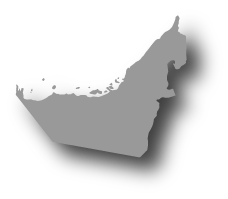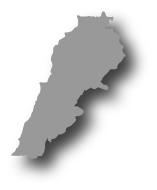2020-03-04
Diversity in Sports Photography — 2020’s “Game On” Trend

Jordan Dyck
2020-03-04
Diversity in Sports Photography — 2020’s “Game On” Trend
Source: Shutterstock Blog




From gender diversity to sustainability, inclusion in sports photography is more important than ever when creating and using sports-related imagery.
Sports photography has emerged as a rising 2020 Creative Trend, with big games on everyone’s mind this year. At Shutterstock, searches for Sports are up +1,647 percent over last year — with searches for Running, Cycling, and Boxing close behind.

Gender Diversity in Sports Photography
We need images to support gender diversity on and off the field. The more we increase the visibility of female athletes and female sports media, the more we challenge the depictions of women in sports. The Women’s Sports Foundation identified six key factors that influence girls’ participation in sports:
- Lack of Access: Girls have 1.3 million fewer opportunities than boys to play high school sports.
- Safety and Transportation Issues: If there isn’t a safe option for a female to travel to a sporting event, she’s less likely to be involved.
- Social Stigma: Discrimination based on perceived sexual orientation and gender identity discourages participation.
- Quality of Experience: The quality of female sports experience is declining compared to male sports.
- Cost: Sports budgets are being slashed within schools.

By showcasing authentic images of girls in a variety of sports, we create an inspiring story of strong female athletes that become role models for future generations. These images in the media inspire participation among young women globally, and it celebrates the inclusion of women in male-dominated sporting events, such as football, rugby, and boxing.
Sports do more than inspire athleticism and physical well-being. Representative sports photography drives youth to learn vital life skills, including teamwork, leadership, and confidence. And, the more we outline the importance of diversity in sports photography, the more brands listen. In 2018, the World Surf League announced equal pay for female and male athletes, an incredible win for female athletes in an internationally male-dominated sport. Wins like this inspire people around the world to rise up, stay involved, and excel in sports.

Depicting Accessibility and Disabilities in Sports Photography
Sports are universal. Games can connect global communities, eliminating linguistic and cultural barriers around the world. The importance of the authentic inclusion and representation of people with disabilities in sports photography is vital to eliminating discrimination. The following is a quote from the United Nations:
“Sport can help reduce the stigma and discrimination associated with disability because it can transform community attitudes, about persons with disabilities, by highlighting their skills and reducing the tendency to see the disability instead of the person.”

By authentically depicting disabilities and accessibility through photography and marketing, we can reduce the stigma associated with disability. The 2020 Paralympic Games will feature 22 sports this year, including Taekwondo for the first time. When creating imagery, we need to think about more than wheelchair basketball — we need to create and share imagery from a wider range of sporting activities.
Moreover, when we depict athletes with disabilities in sports photography, we need to ensure that we’re using the appropriate keywords and guidelines. An article by BC Wheelchair Sports outlines multiple guidelines on how media can report on athletes with disabilities. Here are a few of these key guidelines:
- Identify the athlete and sport first, then the disability (if it’s relevant).
- Emphasize ability over limitation. Avoid emotional keywords.
- Portray athletes accurately.
- Avoid portraying an athlete as extraordinary or superhuman.

Searchable Keywords for Disabilities in Sports Photography:
- An athlete with a disability
- Person/athlete who uses a wheelchair
- An amputee
- Person with Cerebral Palsy
- Person with Paraplegia
- Person with Quadriplegia
Keywords to Avoid for Disabilities in Sports Photography:
- Handicapped and/or crippled
- Confined to a wheelchair
- Courage/courageous
- Physically challenged
- A paraplegic
- A quadriplegic
LGBTQ+ Inclusion in Sports Photography
When you think of sports photography, you often think of teams. However, the unfortunate reality for many LGBTQ+ youth and adults is a lack of acceptance within the sports community. The emotional impact and benefits of sports are undeniable. And, as creatives, we need to create content that shows sports as a platform for inclusion, empowerment, and social change.
The LGBTQ+ nonprofit organization Equality Network released their policy campaign — Out for Sports — focused on LGBTQ+ inclusion in sports, and the results were disheartening. Overall findings revealed that lesbian, gay, bisexual, and transgender people continue to face homophobia, biphobia, transphobia, and other barriers to participating in sports.

In a separate study by the Human Rights Campaign and University of Connecticut Play to Win: Improving the Lives of LGBTQ Youth in Sports, findings included the following:
- 80 percent of LGBQ teenagers are not out to their coaches.
- 82 percent of transgender teenagers are not out to their coaches.
- 24 percent of LGBTQ youth play a school sport, compared to 68 percent of a national sample.
Representative sports photography influences people everywhere to be involved in sports and sporting events. From powerful victories to crushing losses, photos that include LGBTQ+ individuals in sports show the community-driven spirit that sports should invoke.
Branding Diversity in Sports Photography
While we’re still a long way from true diversity and equal representation in sports photography, the increased visibility of diverse individuals and storylines within sports is inspiring brands to share images that offer a more inclusive view of sports and games. The following brands are using powerful images of sports to tell emotional stories that connect with their customers, while inspiring people around the globe to become more involved. The more access that brands have to images featuring diversity and inclusion in sports, the more opportunity they have to use these images to tell branded stories in their marketing efforts.

Here are some of our favorite instances of inclusion and diversity in sports photography and film, from brands around the world.
Sisters in Sweat (#SistersInSweat) by Gatorade
A touching and emotional tribute from world-renowned tennis star Serena Williams. The acclaimed athlete partnered with Gatorade with a sweet message of advice to both her newborn daughter and female athletes everywhere.
Nike Pro Hijab from Nike
Nike recently did a campaign with @gazawiyaa, a Palestinian scuba diver and swimmer who lives and works in London. The campaign highlighted the Nike Pro Hijab, a sports hijab intended to encourage Muslim women to be more involved in athletic activities.
Patricio Manuel for Everlast
Everlast, one of the world’s leading brands in boxing, selected transgender athlete Patricio Manuel for its “Be First” campaign. Manuel is the first transgender boxer to compete professionally. In a quote for the campaign, Manuel states, “I want to live in a world where being yourself isn’t seen as some courageous act.”


Qatar

Commercial bank tower, West Bay,
15th floor, Doha, Qatar
PO Box 27111
+ 974 50 239 329
QATAR@CREAPIX.NET











